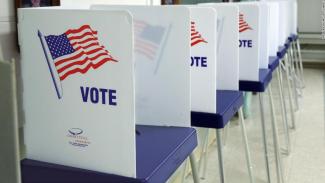
Market Watch - October 2020
We are pleased to provide you with our quarterly newsletter featuring the status of our investment class weightings, our interpretation of recent data and our outlook for the future. If you have any questions about any topic, we hope you will not hesitate to contact us.
Status of our Investment Class Weightings
Changes from our May 2020 Market Watch are noted in italic.
US Large Cap Sectors –
Overweight – Health Care and Information Technology
Neutral – Communication Services, Consumer Staples, Industrials, and Materials
Underweight – Consumer Discretionary and Financials
No Weighting – Energy and Utilities
US Mid and Small Cap – Maintain all weightings.
International Developed Markets – Maintain all weightings.
Emerging Markets – Maintain reduced weightings.
Alternative Strategies – Maintain all weightings.
We will maintain an average bond portfolio duration below 5.88 years, the current effective duration of the Barclays US Aggregate Bond Index.
Multi-sector Bond Funds – Maintain all weightings.
Investment Grade US Corporate Bonds – Maintain all weightings.
Convertible Bonds – Maintain all weightings.
High Yield US Corporate Bonds – No positions.
Investment Grade Municipal Bonds – Maintain all weightings.
Data – After rebounding nicely for five consecutive months, the equity markets retreated during September. There are several possible reasons for the selling, but the most likely factors are (1) profit taking in the technology sector, (2) the realization that additional fiscal stimulus or CARES 2 is not coming and (3) the upcoming US presidential election. For 2020 YTD, we see the following equity benchmark returns: US Large Cap – DJIA (-2.65%) and S&P 500 (+4.09%), US Small Cap – Russell 2000 (-9.64%) and International – ACWX (-6.37%). Economic data is generally improving. Volatility (as measured by VIX) has remained above the long run average of 20.0, a trend we expect will continue until 2021. Estimates of GDP growth for Q3 are in a range of +30% to +35%, an historic comeback after the painful setback recorded for Q2 (-31.4%). Consumer confidence, as measured and reported by the Conference Board, surged in September after back-to-back monthly declines, but remains well below pre-Covid 19 levels. Inflation, as measured by the change in the Consumer Price Index, came in at 1.3% in August, below the Fed target of 2%. Monthly job growth since the historic collapse in April has come in at 2,625,000, leaving the national unemployment rate at a high 8.4%. Retail sales remain strong, though monthly gains have moderated since a good rebound in May and June. Data from the housing sector continues to be strong with housing starts and new home sales reporting gains in May, June and July.
Elections and the Market
Every four years American voters go to the polls to choose a new President. As the anticipation of selecting a new leader intensifies throughout the election year many investors are focused on how the stock market may be impacted by the long campaigns and eventual outcome. Is there a correlation between presidential election cycles and stock market returns? Yes, there is, however, the degree of correlation might be a surprise. In the fifteen presidential election years since 1960, the S&P 500 has fallen just three times: 1960 (-3.0%), 2000 (-9.1%) and 2008 (-37.0%) as each of these years followed recessions in the previous year. The average annual return for the fifteen presidential election years is +9.2%, slightly better than the overall period average return of +8.9%. This election year data suggests that 2020 could yet provide above average market returns even in the face of the ongoing Covid 19 pandemic. History teaches us that within the 4-year presidential election cycle the smallest market gains, on average, are typically seen in the post-election year (+6.5%) and then the mid-term year (+7.0%). The largest stock market gains (+16.4%) are typically seen in the third year in office. Thus far, during the Trump presidency we have seen annual market returns of +19.41% (post-election year), -6.23% (mid-term year) and +28.87% (third year).
Is either party better for the stock market? Suggestions that a win by a Republican candidate (often considered more business-friendly) over a Democratic candidate would be better for the stock market are not supported by history. Since the Reagan years we see the following average market returns: under Democratic President (+9.7%) and under Republican President (+6.7%). The prevailing wisdom is that presidential elections add political instability and uncertainty to the mix of other factors (like GDP growth, interest rates and unemployment) that may already be impacting the broader market. In the weeks leading up to an election, we are bombarded with anecdotal evidence that if considered in isolation can be misleading. Another common premise suggests that a divided congress will accomplish little legislatively and that the resulting lack of progress is supportive of stock price growth. Though it is hard to envision in 2020, a divided government often results in broader compromise on important issues like taxation, federal spending and infrastructure. There is, however, more to this story. In fact, during election years in which Republicans control Congress, the market returns a solid +19.7%, versus an average gain of +7.6% with a divided Congress and just 3.2% when Democrats are in control. Elections that resulted in a change in composition by party tended to be preceded by periods of market underperformance.
It is interesting to note that the market fares better in an election with an incumbent versus an open election. This pattern makes sense as incumbents are more inclined to stimulate the economy in market-friendly ways in the hopes of increasing their odds of reelection. Analysis by sector shows that while most sectors advance during an election year, there are three (Technology, Materials and Communication Services) which show, on average, small declines. Stock price performance in the summer leading up to a presidential election can offer some insight into which candidate will be successful in November. When the market climbs from August through October the incumbent party has a great track record winning 82% of the time. In contrast, a falling market during the same time period is predictive (over 86%) of a win by the replacement party. Thus far, for August and September the S&P 500 has moved up +2.80%.

